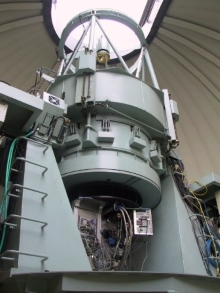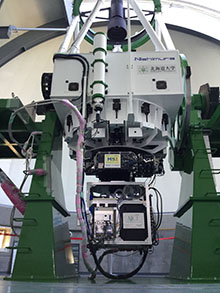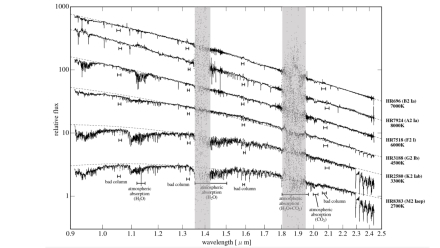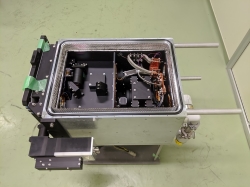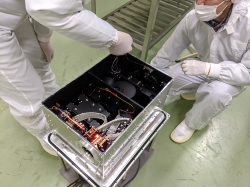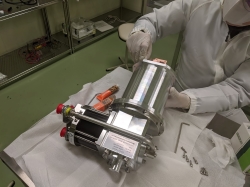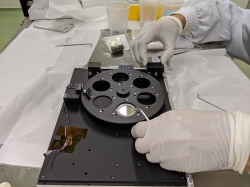
|
TAO Project |
|
The TAO project

|
Preparations of NICE (the first-light instrument for the TAO) are underwayNICE (Near-Infrared Cross dispersed Echelle spectrograph) is a NIR echelle spectrograph which was developed at the Institute of Astronomy (IoA), the University of Tokyo in 2000 (the PI: Prof. Masuo Tanaka) and will be equipped with the TAO 6.5m telescope as the first-light instrument. NICE uses the echelle grating and the cross-disperser as dispersing elements and covers the infrared wavelength range of 0.9 to 2.5 microns with a spectral resolution of 2600. It can derive near-infrared spectra of various objects and reveal the details of the physical condition of them. In the initial stage of the operation, NICE was installed at the 1.5m IR simulator of the National Astronomical Observatory of Japan (NAOJ) and obtained NIR near-infrared spectra of massive stars (such as OB-type stars, Wolf-Rayet stars, Yellow Supergiants, and Luminous Blue Variables) and medium mass stars (such as AGB stars and Carbon stars), and achieved a lot about stellar mass ejection phenomena. Afterward, NICE was located installed at the 1.6m Pirka Telescope of Hokkaido University, and various observations of not only massive stars but also the solar system objects were carried out. Detailed analysis of obtained data is in progress and will contribute to understanding the structure and dynamics of the Venus atmosphere and so on. NICE will be operated at the TAO site (Altitude: 5640m) with excellent atmospheric conditions, where the atmospheric absorption is largely reduced and can obtain continuous NIR spectra. In addition, the large 6.5m telescope of the TAO allows us to promote research with NICE for hift-z objects such as distant galaxies and quasars. We terminated 8 years of NICE operation on the Pirka Telescope in September 2018 and transferred it back to the IoA. And, we are executing mechanical refurbishments, the characteristic evaluation, and the development of the operation software before transportation to Chile.
We, the TAO NICE development team, are now working together so that we can achieve excellent results just after the start of the TAO operation. Please stay tuned for more news.
Copyright(c) 2007-2018 TAO Project, Institute of Astronomy, Graduate School of Science, University of Tokyo
|
